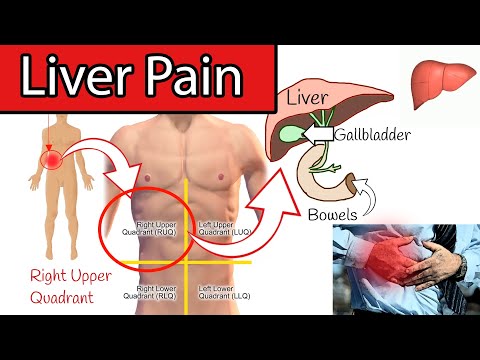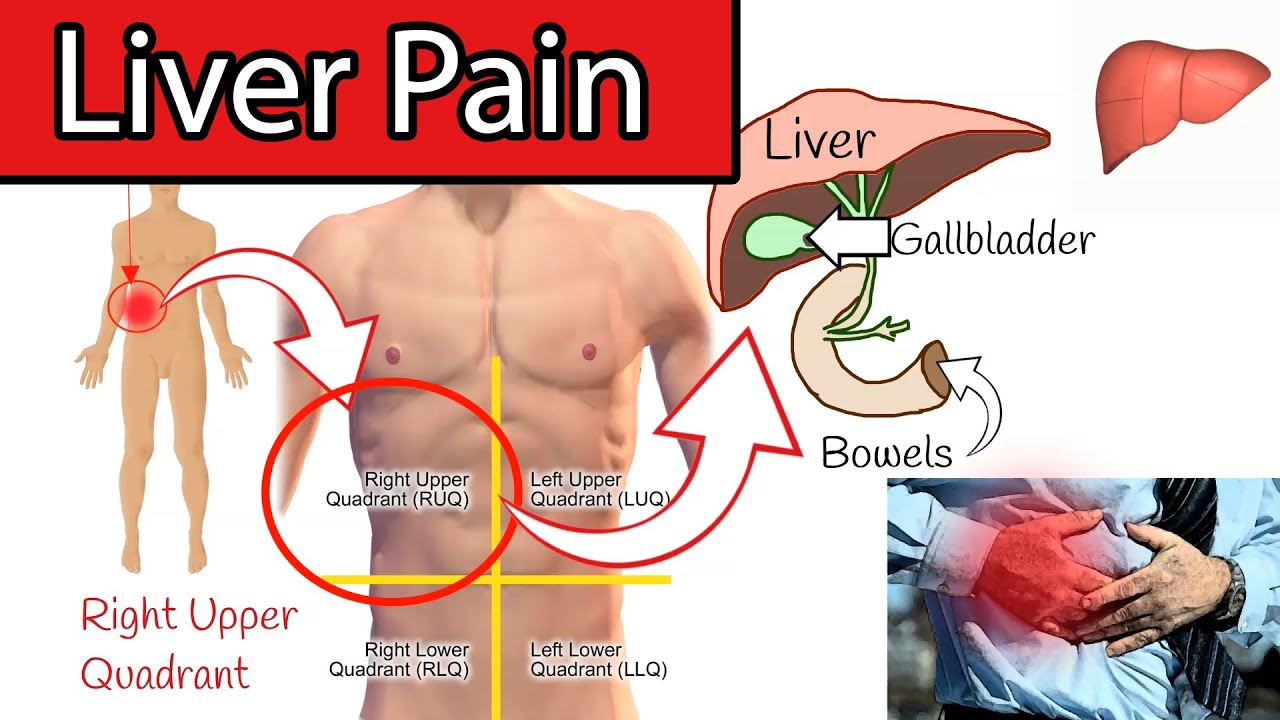The Right Side Organ That Will Intrigue You Have you ever wondered about the mysterious workings of your own body? Well, prepare to be captivated by the lesser-known organ that resides on your right side. This enigmatic entity has long piqued the curiosity of medical professionals and laypeople alike, with its vital role in maintaining your overall well-being. While your left side is commonly associated with the heart, it’s time to shift your focus to the right and discover the mesmerizing organ that lies within. Protected by your ribcage, this organ is none other than the liver. Nestled snugly beneath your diaphragm, it quietly carries out an array of essential functions that keep your body in equilibrium. From detoxifying harmful substances to aiding in digestion and metabolism, the liver plays a crucial role in maintaining your overall health. But what truly sets this remarkable organ apart? Well, its regenerative abilities are nothing short of extraordinary. Even if a portion of the liver is damaged or removed, it has the remarkable capacity to regenerate itself, restoring its full functionality. This incredible feature has fascinated scientists for decades and holds immense potential for medical advancements. So, whether you’re a health enthusiast or simply intrigued by the wonders of the human body, exploring the organ on your right side will undoubtedly leave you in awe. Take a moment to appreciate the complexity and resilience of your liver, an extraordinary organ that silently safeguards your well-being.

Organs Located on the Right Side of the Body
| Organ | Location | Main Functions |
|---|---|---|
| Liver | Upper right abdomen, beneath the diaphragm | The liver plays a crucial role in metabolism, detoxification, production of bile, storage of vitamins and minerals, and synthesis of proteins. |
| Gallbladder | Located under the liver | The gallbladder stores and concentrates bile produced by the liver, releasing it into the small intestine to aid in digestion and absorption of fats. |
| Right Lung | Occupies the right thoracic cavity | The right lung is responsible for oxygenating blood, removing carbon dioxide, and maintaining respiratory function by exchanging gases through its bronchial tree. |
| Right Kidney | Found in the right upper abdomen, slightly lower than the liver | The right kidney filters waste products, excess water, and electrolytes from the bloodstream, producing urine while also maintaining fluid and electrolyte balance. |
| Appendix | Located in the lower right abdomen | The appendix is a small, finger-like pouch with an unknown function, although it is believed to contribute to the immune system and may have a role in gut health. |
“The Aching Sidekick: Easing Right Upper Abdominal Woes”
The Liver: Your Right Side Guardian
The liver is one of the most vital organs in the human body, located on the right side of the abdomen, just below the diaphragm. It serves as a multifunctional powerhouse, performing numerous critical functions that are essential for our overall well-being. From detoxification to metabolism, the liver plays a crucial role in maintaining our health and vitality.
1. Detoxification: Cleansing Your Body
Detoxification is one of the primary roles of the liver. It acts as a filter, removing harmful toxins and chemicals from our bloodstream. The liver breaks down these toxins into less harmful substances that can be excreted from the body through urine or stool.
Additionally, it metabolizes drugs and alcohol, preventing them from accumulating and causing harm. This detoxification process is essential for maintaining a healthy body and preventing the accumulation of harmful substances.
2. Metabolism: The Chemical Factory
Metabolism is another vital function performed by the liver. It regulates the production, storage, and breakdown of nutrients, such as carbohydrates, proteins, and fats. The liver converts excess glucose into glycogen, which is stored for later use when blood sugar levels drop.
Furthermore, it produces bile, a substance necessary for the digestion and absorption of fats. Without a properly functioning liver, our metabolism would be impaired, leading to various health issues such as obesity, diabetes, and high cholesterol.
3. Nutrient Storage: The Body’s Warehouse
The liver acts as a storage facility for various nutrients, including vitamins and minerals. It stores vitamins A, D, E, K, and B12, as well as iron and copper. These nutrients are released into the bloodstream as needed, ensuring a steady supply for the body’s functions.
Moreover, the liver stores excess glucose in the form of glycogen, providing a quick source of energy when needed. This nutrient storage capacity is crucial, especially during periods of fasting or intense physical activity.
4. Immune System Support: Guardian of Your Health
The liver plays a significant role in supporting the immune system, acting as a defense mechanism against harmful pathogens. It produces immune factors called cytokines, which help fight off infections and regulate immune responses.
Additionally, it filters and removes bacteria and other foreign particles from the bloodstream, preventing them from spreading throughout the body. A healthy liver is vital for a robust immune system and overall good health.
5. Regeneration: The Incredible Healing Power
The liver possesses a remarkable ability to regenerate itself. If a portion of the liver is damaged or removed, it can grow back to its original size within a matter of weeks. This regenerative capacity is unique to the liver and allows it to recover from injuries or diseases.
However, excessive and chronic damage to the liver, such as in cases of alcohol abuse or certain diseases like hepatitis, can lead to irreversible damage and impair its regenerative abilities. Protecting the liver from harm is crucial for maintaining its regenerative capabilities and overall health.
Conclusion
The liver, located on the right side of our abdomen, is an incredible organ that performs multiple essential functions. From detoxification and metabolism to nutrient storage and immune system support, it plays a vital role in maintaining our overall health and well-being.
Understanding the importance of the liver and taking steps to protect it, such as adopting a healthy lifestyle and avoiding harmful substances, is crucial for ensuring its optimal functioning. By doing so, we can harness the incredible power of this remarkable organ and safeguard our health for years to come.
Organs on Your Right Side:
Frequently Asked Questions
What organ is located on the right side of the body?
What are the functions of the liver?
1. Metabolism: The liver regulates the metabolism of carbohydrates, proteins, and fats. It converts excess glucose into glycogen for storage and releases it when needed. The liver also synthesizes amino acids and processes dietary fats.
2. Detoxification: The liver detoxifies harmful substances such as drugs, alcohol, and metabolic waste products. It converts these toxins into less harmful forms that can be excreted from the body.
3. Storage: The liver stores essential nutrients such as vitamins (A, D, E, K), minerals (iron and copper), and glycogen. These stored nutrients are released into the bloodstream as needed.
4. Bile Production: The liver produces bile, a fluid that aids in the digestion and absorption of fats. Bile is stored in the gallbladder and released into the small intestine when needed.
5. Immune Function: The liver plays a crucial role in the body’s immune system. It helps remove bacteria, viruses, and other foreign substances from the bloodstream.
What are the common diseases and conditions that affect the liver?
1. Hepatitis: Hepatitis is inflammation of the liver, usually caused by viral infections (hepatitis A, B, C) or excessive alcohol consumption. It can lead to liver damage and cirrhosis if left untreated.
2. Cirrhosis: Cirrhosis is a late stage of liver scarring caused by long-term liver damage. It can result from chronic hepatitis, alcoholism, fatty liver disease, or other causes. Cirrhosis impairs liver function and can lead to liver failure.
3. Liver Cancer: Liver cancer can develop in the liver cells or spread from other parts of the body. It is often associated with underlying liver diseases such as cirrhosis or chronic hepatitis.
4. Nonalcoholic Fatty Liver Disease (NAFLD): NAFLD is the accumulation of excess fat in the liver, not caused by alcohol consumption. It is commonly associated with obesity, diabetes, high cholesterol, and metabolic syndrome.
5. Liver Failure: Liver failure occurs when the liver loses its ability to function properly. It can result from acute liver injury, chronic liver diseases, or certain medications.

